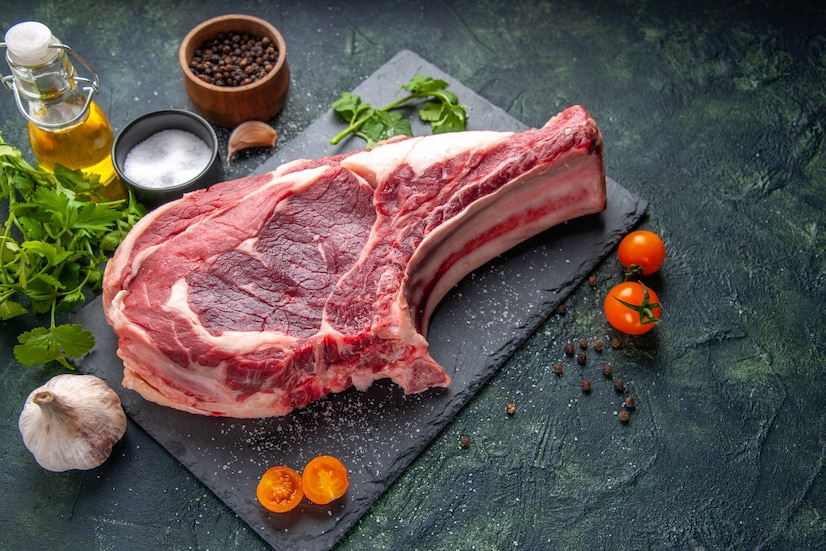Whether you’re a vegan, a vegetarian or an omnivore, the debate between fresh and frozen meat has been around for years. On one hand, fresh meat has its advantages – it’s more natural, tastes better and often costs less than frozen. On the other hand, frozen meat has its own set of pros – it lasts longer and may contain fewer preservatives. So which should you choose? In this blog post, we’ll be discussing the pros and cons of both fresh and frozen meat to help you make an informed decision when it comes to your next grocery shopping trip.
What’s the difference between fresh and frozen meat?
When you go to the grocery store, you may notice that some meats are labeled as “fresh” while others are labeled as “frozen.” So, what’s the difference between these two types of meat?
Fresh meat is defined as any unprocessed meat that has not been frozen. This means that the meat was recently slaughtered and has not been stored for an extended period of time. Fresh meat is often more expensive than frozen meat because it has a shorter shelf life and needs to be used more quickly.
Frozen meat, on the other hand, is defined as any meat that has been stored at a temperature below -18°C (-0.4°F). This means that the meat was processed and then immediately frozen in order to preserve its quality. Frozen meat can last for months or even years without going bad, making it a more convenient (and often less expensive) option for many people.
So, which type of meat is better? That really depends on your personal preference and needs. If you want the absolute freshest possiblemeat, then you’ll need to buy fresh Meat that hasn’t been frozen will start to deteriorate more quickly than frozen meat, so you’ll need to cook it sooner. On the other hand, if you wantmeat that will last longer and is more convenient, then frozen meat is probably a better option for you.
What’s the best: Fresh VS Frozen Meat?
There are many benefits to both fresh and frozen meat, so the best option depends on your needs and preferences.
Fresh meat has never been frozen, so it retains all of its natural juices and flavors. This makes it ideal for cooking methods that require little or no additional seasoning, such as grilling or roasting. Fresh meat is also more expensive than frozen, so it may not be the best option if you’re on a budget.
Frozen meat has been previously frozen and then thawed, so it may not have the same flavor or texture as fresh meat. However, it’s usually more affordable than fresh meat, making it a good option if you’re cooking for a large group or need to stretch your food budget. Additionally, freezing meat helps to lock in nutrients, so it can be a healthy choice for those who are watching their diets.
How can you tell if it’s fresh meat?
If you’re ever in doubt about whether meat is fresh or not, there are a few things you can look for. Fresh meat should have a firm texture and should be a deep red color. If the meat is soft or has started to turn brown, it is not fresh. Fresh meat will also have a mild smell, while bad meat will have a strong, unpleasant odor. If you’re still unsure, you can always ask the butcher or grocer for advice.
What happens to meat when frozen?
When meat is frozen, the water inside the cells begins to turn into ice crystals. This process is called freezing point depression. The ice crystals can damage the cell membranes, which causes the juices to leak out when the meat thaws. This is why frozen meat often looks dry and feels tough.
Best way to thaw meat
There are a few different ways to thaw meat, but some methods are better than others. The best way to thaw meat is to place it in the refrigerator 24 hours before you plan to cook it. This method takes longer, but it ensures that the meat will thaw slowly and evenly, which helps to preserve its quality. If you’re pressed for time, you can also place the meat in a sealed bag and submerge it in cold water. This method will thaw the meat more quickly, but there is a greater risk of bacteria growth if the water is not kept at a safe temperature. Finally, you can cook frozen meat without thawing it first, although this is not always recommended. If you choose to do this, be sure to cook the meat until it reaches a safe internal temperature as determined by a food thermometer.
Refrigerator thawing
It’s a common misconception that frozen meat is somehow lower quality than fresh meat. In reality, freezing meat can actually help to preserve its quality and make it last longer. However, there is one important caveat when it comes to frozen meat: you need to thaw it properly before cooking.
If you don’t thaw your frozen meat properly, you run the risk of losing all of the benefits that freezing offers. That’s why it’s so important to know how to thaw meat correctly. Here are a few tips for thawing your meat:
– Take it out of the freezer in advance. Don’t try to cook frozen meat without giving it time to thaw first. Depending on the size and thickness of the piece of meat, it can take anywhere from a few hours to a day to thaw completely.
– Put it in the fridge. The best way to thaw meat is slowly in the fridge. This allows the ice crystals to melt without damaging the cells in the meat.
– Use cold water. If you’re short on time, you can place your frozen meat in a resealable bag and submerge it in cold water. Change the water every 30 minutes or so until the meat is thawed. Just make sure not to let themeat sit in water for too long, as this can start to cook it.
– Cook it immediately after thawing. Once your meat is thawed, cook it as
Coldwater thawing
When it comes to thawing meat, there are two main methods: cold water thawing and frozen thawing. Each method has its own pros and cons, so it’s important to know which one is best for the type of meat you’re dealing with.
Cold water thawing is the quicker of the two methods, but it requires a little more attention. To cold water thaw, simply place the meat in a resealable bag and submerge it in cold water. Change the water every 30 minutes or so to ensure that it stays cold. Smaller cuts of meat will take about an hour to thaw this way, while larger cuts (like a whole chicken) will take closer to 24 hours.
One thing to keep in mind with cold water thawing is that there is a higher risk of bacteria growth during this process. That’s why it’s important to cook the meat as soon as it’s finished thawing. If you need to hold off on cooking for a bit, transfer the meat to the refrigerator until you’re ready to use it.
Frozen thawing, on the other hand, takes much longer but is generally considered safer since there is no risk of bacteria growth. To frozen thaw, simply place the meat in the refrigerator and let it slowly defrost over 24 hours or more. This method works best for larger cuts of meat that
Final Words
When it comes to meat, there is a big debate on whether fresh or frozen is better. Each has its own advantages and disadvantages that you should take into account when making your decision.
Fresh meat has never been frozen, so it retains all of its natural flavors and juices. It can be more expensive than frozen meat, but many people believe it is worth the extra cost. The main downside of fresh meat is that it has a shorter shelf life and needs to be used within a few days of purchase.
Frozen meat, on the other hand, can last for months in your freezer. It is often cheaper than fresh meat, making it a great option for budget-minded shoppers. The main downside of frozen meat is that it can lose some of its flavor during the freezing process.
So, which is better? Ultimately, the decision comes down to personal preference. If you are looking for the best flavor and quality, then fresh meat is the way to go. However, if you are looking for convenience and value, then frozen meat may be a better option for you.



